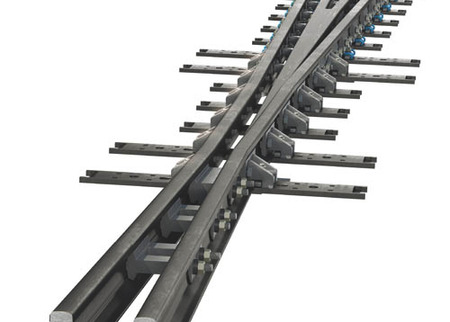Swing Nose Crossing
The swing nose crossing was developed in order to counteract the disadvantages of fixed crossings, i.e. a bumpy and jerky wheel overrun, a transversely accelerated wheelset and the associated high strain on the components.
The swing nose crossing was developed in order to counteract the disadvantages of fixed crossings, i.e. a bumpy and jerky wheel overrun, a transversely accelerated wheelset and the associated high strain on the components.

The advantage is the uninterrupted running edge. Check rails are no longer necessary. The tip of the crossing is fit snuggly to the wing rail at a flat angle over a large length. This allows a long, homogeneous wheel overrun. This design creates track-like guidance conditions in the crossing area. The swing nose crossing consists basically of the two wing rails and the crossing block. The crossing block represents the movable element of the swing nose crossing. Depending on the direction of travel/position of the crossing, it can be in contact either with the right or left wing rail. The most widely used design in high-speed lines consists of a solid crossing block being milled from a forged block and then hardened and tempered, and two heel rails butt-welded to the block.
Materials and quality inspection: